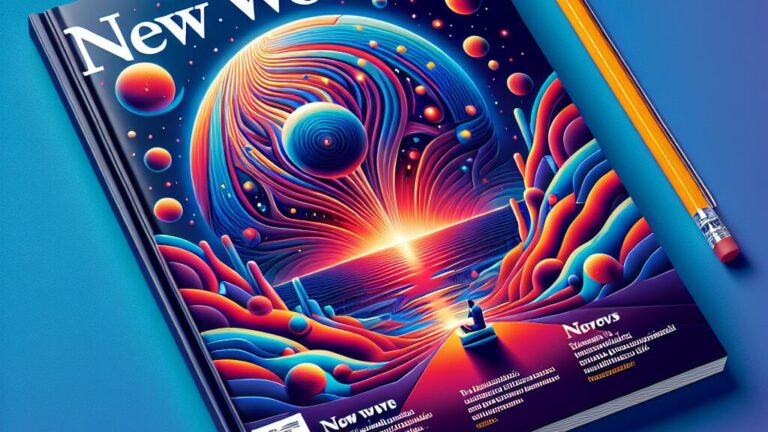Ethics in Archaeological Excavations
Ethics play a crucial role in archaeological excavations, guiding researchers on how to conduct their work responsibly and respectfully. One of the key ethical considerations in archaeological fieldwork is the principle of non-invasive investigation, which emphasizes minimizing any potential harm to the archaeological site and its surroundings. This involves employing techniques that preserve the site’s integrity and cultural value, ensuring that future generations can also benefit from its study.
Another important ethical aspect is the treatment of human remains and sacred objects found during excavations. Archaeologists must approach these discoveries with the utmost sensitivity and adhere to local and international laws regarding their handling and repatriation. Respect for the cultural beliefs and practices of indigenous communities is paramount in ensuring that archaeological research is conducted in a manner that honors the heritage of all involved parties.
Dealing with Cultural Sensitivities
Archaeological excavations often uncover artifacts and sites that hold deep cultural significance to various communities around the world. It is crucial for archaeologists to be mindful and respectful of these cultural sensitivities when conducting research and presenting findings. Understanding the historical context and significance of the discoveries can help ensure that the cultural heritage of affected communities is preserved and respected.
Engaging with local stakeholders and indigenous communities is essential in addressing cultural sensitivities in archaeological work. Building trust, fostering open communication, and involving community members in the research process can lead to a more inclusive and culturally sensitive approach to excavation and interpretation. By collaborating with those directly impacted by the discoveries, archaeologists can navigate potential challenges and conflicts while working towards a shared goal of preserving and promoting cultural heritage.
Collaborative Efforts in Archaeological Research
Collaborative efforts play a crucial role in advancing archaeological research. In the field of archaeology, teamwork often involves experts from various disciplines coming together to contribute their unique perspectives and knowledge. Archaeologists work alongside anthropologists, historians, geologists, and other specialists to gain a comprehensive understanding of a site or artifact. This multidisciplinary approach allows researchers to piece together the puzzle of the past more effectively and accurately.
Moreover, collaboration extends beyond academia and involves partnerships with local communities, governments, and even international organizations. Engaging with indigenous peoples and local communities is essential in ensuring that archaeological research is conducted ethically and respectfully. By involving community members in the research process, archaeologists can benefit from traditional knowledge, local insights, and a deeper understanding of the cultural significance of the archaeological sites being studied. Ultimately, collaborative efforts enhance the quality and scope of archaeological discoveries by fostering a more inclusive and holistic approach to research.
Multidisciplinary Approaches in Fieldwork
Multidisciplinary approaches in archaeological fieldwork involve the collaboration of experts from various disciplines to gain a comprehensive understanding of archaeological sites. Archaeologists often work alongside specialists in fields such as geology, botany, anthropology, and even technology to analyze different aspects of a site. This interdisciplinary approach allows researchers to interpret findings through a more holistic lens, considering factors beyond just the artifacts themselves.
Geologists can provide insight into the geological history of a site, while botanists can study plant remains to understand ancient environments. Anthropologists contribute by interpreting human behavior and societal structures based on the archaeological evidence uncovered. Additionally, technology experts play a crucial role in using advanced tools such as 3D imaging, GIS mapping, and ground-penetrating radar to enhance the excavation process. This collaborative effort not only enriches the interpretation of archaeological discoveries but also fosters a more nuanced understanding of past civilizations.
Impact of Technology on Archaeological Discoveries
Technology has revolutionized the field of archaeology, allowing researchers to uncover new information and make discoveries that were once unimaginable. One of the most impactful advancements in recent years has been the use of drones for site mapping. These aerial vehicles provide archaeologists with high-resolution images and detailed maps of excavation sites, allowing for a better understanding of the layout and features of ancient civilizations.
Another significant technological breakthrough is the introduction of 3D scanning and modeling. By capturing detailed three-dimensional images of artifacts and archaeological sites, researchers can create accurate digital replicas for analysis and preservation. This technology has not only enhanced our ability to study and document historical findings but also has paved the way for innovative research methods that were previously inaccessible.
Role of Drones in Site Mapping
Drones have revolutionized the way archaeological sites are mapped and documented. These unmanned aerial vehicles provide a bird’s-eye view of the landscape and offer high-resolution images that help archaeologists identify new sites, traces of ancient settlements, and patterns that may not be visible from the ground. By using drones for site mapping, researchers can cover large areas in a fraction of the time it would take using traditional methods, making the process more efficient and cost-effective.
The use of drones also enhances the safety of archaeological fieldwork by reducing the need for researchers to physically access remote or hazardous terrains. This technology allows archaeologists to explore rugged terrains, dense forests, or even underwater sites with ease, ensuring that valuable data can be collected without putting individuals at risk. Moreover, drones provide a non-invasive way to survey sites, minimizing the disturbance to the environment and cultural heritage while still producing detailed and accurate maps.
Future of Archaeological Discoveries
The future of archaeological discoveries looks promising, with advancements in technology playing a crucial role in expanding our understanding of the past. Integrating tools like virtual reality into archaeological exploration allows researchers and the public to immerse themselves in ancient worlds, bringing history to life in a way that was previously unimaginable. By creating realistic digital reconstructions of archaeological sites and artifacts, virtual reality opens up new avenues for education and research in the field of archaeology.
Furthermore, collaborations between archaeologists and other disciplines such as computer science, geology, and environmental science are enhancing our ability to uncover and interpret archaeological remains. Through multidisciplinary approaches in fieldwork, researchers can gain a more comprehensive view of ancient civilizations, shedding light on aspects of history that were previously unknown. As these collaborative efforts continue to grow, we can expect even more groundbreaking discoveries that will reshape our understanding of the past.
Integrating Virtual Reality in Archaeological Exploration
As technology continues to advance, virtual reality (VR) is increasingly being utilized in archaeological exploration. VR offers researchers and archaeologists the ability to recreate ancient sites and artifacts in a way that was not possible before. By using VR, scholars can immerse themselves in a digital representation of a site and study it from every angle, providing new insights and perspectives that traditional methods may not offer.
Virtual reality also allows for the preservation of fragile archaeological sites. Instead of risking damage to delicate artifacts by allowing visitors to physically enter a site, VR provides a way for people to experience the archaeological wonders without causing harm. This preservation aspect of VR is particularly valuable in ensuring that future generations can appreciate and learn from important historical sites without compromising their integrity.
FAQS
What are some ethical considerations in archaeological excavations?
Ethical considerations in archaeological excavations include obtaining proper permits, respecting local cultures and heritage, preserving the integrity of the site, and ensuring that findings are reported accurately.
How do archaeologists deal with cultural sensitivities during excavations?
Archaeologists deal with cultural sensitivities by engaging with local communities, consulting with indigenous groups, and incorporating their perspectives and knowledge into the research process.
Why is collaboration important in archaeological research?
Collaboration in archaeological research is important because it allows for sharing of resources, expertise, and knowledge across disciplines and institutions, leading to a more comprehensive understanding of the past.
What are some multidisciplinary approaches used in archaeological fieldwork?
Multidisciplinary approaches in archaeological fieldwork involve collaborating with specialists in fields such as geology, biology, chemistry, and remote sensing to analyze artifacts, sites, and landscapes from multiple perspectives.
How has technology impacted archaeological discoveries?
Technology has revolutionized archaeological discoveries by enabling faster and more accurate data collection, analysis, and interpretation. Tools like drones are now commonly used for site mapping and aerial surveys.
What is the role of drones in archaeological site mapping?
Drones play a crucial role in archaeological site mapping by providing high-resolution aerial images, 3D modeling, and thermal imaging, which help archaeologists identify and document ancient structures and landscapes.
What does the future hold for archaeological discoveries?
The future of archaeological discoveries is exciting, with advancements in technology like virtual reality offering new ways to explore and experience archaeological sites, making the past more accessible and engaging for people around the world.







